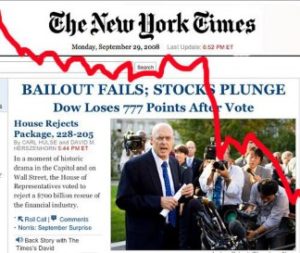Trends in income and wealth in Australia
Editor
The following extracts are from a recent issue of Economic Outlook written by Prof Bill Mitchell [1]. According to Bill the era of fiscal austerity is coming to an end, as the world’s governments are being forced into action in response to what many perceive to be an impending serious downturn.
– – – – – – – – – – – – – – – – – – – – – – – – – – – –
On August 2, 2019, the ABS released retail trade data, June 2019, which showed that “Australian turnover rose 0.4% in June 2019. This follows a rise of 0.1% in May 2019 and a fall of 0.1% in April 2019.” The ABS said that: “… overall the retail environment remains subdued …”. We also learned that with growth so weak, some of the retail segments are in free fall. This was the first release since the RBA cut interest rates, once again, which confirms that spending is not very sensitive to interest rate movements.
Some reports argued that “while things are not getting worse, the figures from the past year are close to recessionary levels”. The same commentator said that: “The most eye-catching figure is the annual growth rate in retail volumes — at just 0.2 per cent, growth over the last 12 months has been weaker than in the GFC and the weakest since the early-90s recession.“
The data also shows that Department stores went backwards and that the big retailers are confirming they are in trouble. They have blamed structural shifts – on-line behaviour, the rise of specialty stores that can undercut the ‘departments’ in the big integrated stores – and slower spending overall (macro failure). Many observers have predicted that the two largest department store companies within Australia will soon merge into one – as the other goes broke. There seems to be a race to see which one of them can hold out for the longest.
Undoubtedly, there are some structural factors that undermine the concept of the department store. They tend to be unwieldy and expensive relative to the specialty shops in electronics, clothing, homewares etc. The costs of running the big stores are also much higher. There is also the issue of offering what people want.
But there is something bigger than the structural shifts going on. On July 12, 2019, the ABS released its latest report — Household Income and Wealth, Australia, 2017-18 – with data which tells a pretty sorry story of what has been happening to spending power as the Federal government pursues its mindless austerity obsession and the economy slows to a near-standstill.
What that data told us was that:
-
- “In 2017–18, the average equivalised disposable household income was$1,062 per week. This was not significantly different from the average in 2015–16 ($1,046 per week), but was compared to a decade ago ($1,018 per week in 2007–08).” In other words, there has been hardly any income growth in the decade to 2017-18.
- “Close to three in four (73%) households were in debt in 2017–18. Of these households, 28% were servicing a total debt that was three or more times their annual disposable income.” Households are now carrying record levels of debt and the situation is becoming unsustainable. The overall household saving ratio cannot keep declining without a bust occurring.
- “The wealthiest 20% of Australian households owned 63% of total house- hold wealth in 2017–18. By comparison, the lowest 20% of households owned less than 1% of all household wealth.”
- “The distribution of wealth is more unequal than the distribution of income”.
- The wealthier Australians have been getting richer. The gap between them and everybody else has widened quite significantly in the recent years. In terms of mean household net worth, the highest quintile has seen significant growth while the lowest three quintiles have barely moved.
Why does this matter? The neoliberal paradigm is laying the roots for its own destruction. The Global Financial Crisis was the first major hiccup. And the stagnation that followed is leading to the next episode in the demise of the current policy orthodoxy. With growth in income and wealth being increasingly skewed towards the top end of the distributions, where spending propensities are lower, private spending growth will falter – as we are seeing.
The only way that economic development can be maintained in that environment is by means of significant government deficits. But the neoliberal era has locked governments into a mindless surplus obsession. Taken together, the system cannot survive. There are hints that the era of fiscal austerity is coming to an end as governments are being forced into action. But I suspect the dam walls will only break when we go back into a serious downturn.
1. http://bilbo.economicoutlook.net/blog/? p=42974




























